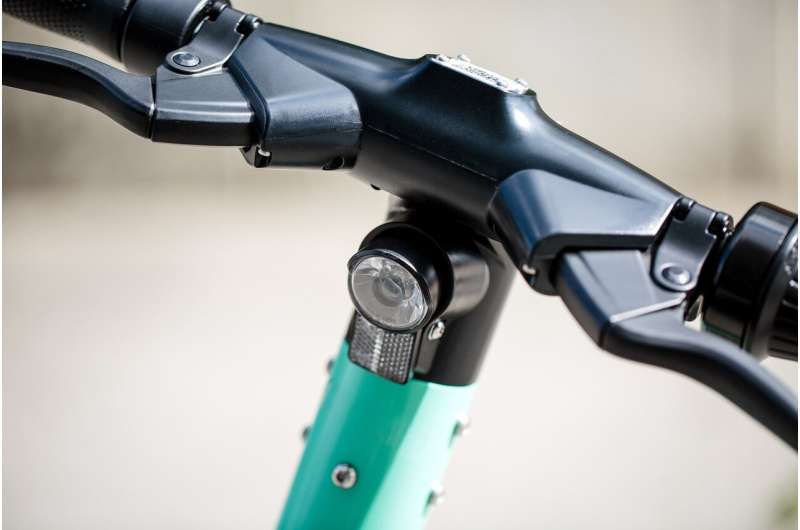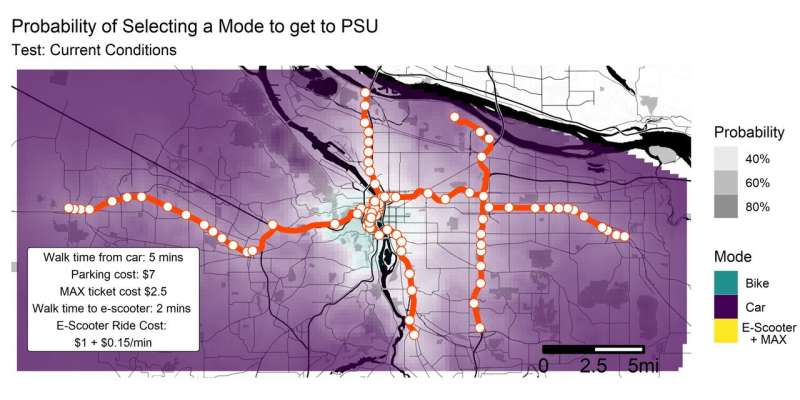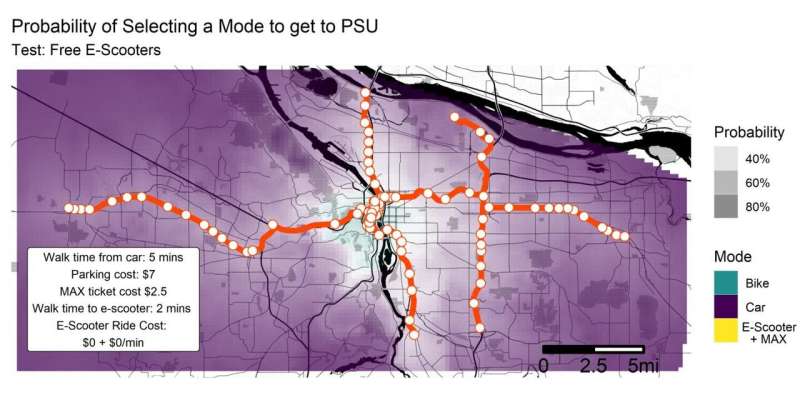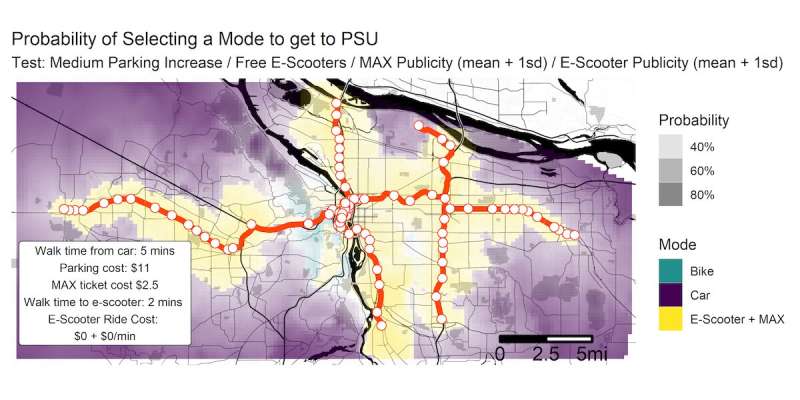Comparing the promise and reality of e-scooters

Is shared micromobility the ideal first/last mile supplement to transit? Can electric scooters make it easier for historically disadvantaged populations to get around? In just three years, brand-new fleets of e-scooters have substantially disrupted and altered the urban mobility landscape. For proponents, it's tempting to view them as a new answer to old problems. A just-released study finds however, that while there is potential for improved mobility if they are paired with other interventions, the shiny rows of e-scooters parked around cities aren't a catchall solution for our longstanding issues.
Portland State University (PSU) graduate Michael McQueen surveyed nearly 2,000 PSU students in his masters thesis, "Comparing the Promise and Reality of E-Scooters: A Critical Assessment of Equity Improvements and Mode-Shift," to learn about their travel behaviors, preferences and barriers to using e-scooters.
What does a university campus reveal about e-scooter usage in the city?
PSU students offer an easily-accessible large population with the shared experience of frequently traveling to a specific urban location-the PSU campus in downtown Portland. The survey sample closely represented the university's full student population by racial makeup. The sample was more racially diverse than the Portland metro area and it captured twice as many female respondents as male respondents, which resulted in models that contained smaller margins of error for racial minority and female coefficients. This is critical to understanding the equity impacts. Given the university setting, it was largely skewed towards younger and lower-income respondents. The upside is that this demographic is typically considered more progressive in their transportation choices, which renders McQueen's findings about their use and perceptions of non-car modes as conservative when compared to the Portland metro area as a whole.
Students were asked how they currently use and perceive e-scooters, and which mode they would choose (between a car, bike, or e-scooter + light rail combination) to get to PSU in a stated choice experiment. Respondents chose their preferred mode in several hypothetical scenarios where the travel times and costs varied. McQueen then developed a model from the experiment which controlled for travel time, cost, sociodemographics, health, travel behavior, and latent attitudes towards the travel modes.

[Primary findings: What influences mode choice?
The statistical model revealed that e-scooters in combination with MAX light rail were not regarded as the most preferred mode for getting to campus anywhere in the metro region, given current pricing and travel times. McQueen concluded that cities should not depend on e-scooters as a de facto first-mile/last-mile solution without targeted management interventions.
So which factors influenced mode choice for traveling to PSU? Some findings that stood out:
- Car "friction" (increased drive time and parking cost) positively influenced choosing e-scooter + MAX (Portland's light rail transit system).
- E-scooter and MAX "friction" (increased walk time to e-scooter, e-scooter ride time, e-scooter cost, and MAX ride time) negatively influenced choosing e-scooter + MAX.
- Black respondents were 45% less likely to choose e-scooter + MAX compared to white respondents.
- Female respondents were 27% less likely to choose e-scooter + MAX compared to male respondents.
- More entrenched drivers were less likely to choose e-scooter + MAX (both those who took more car trips and those who felt more positively about cars).
- Those who already perceived bikes, e-scooters and MAX more positively were more likely to choose e-scooter + MAX.
McQueen applied the model spatially to Portland, to understand catchment areas where the average respondent would prefer which mode given realistic travel times and prices. The below maps (figures 1, 2, and 3) illustrate the catchment areas. In these maps, the color indicates the most likely mode choice at that location, and the intensity of the color indicates the probability that it would be chosen among the three modes.

Barriers to riding e-scooters
At the time of the survey (the week of Mar 2, 2020), only 6% of the nearly 2,000 respondents had taken at least one e-scooter ride in the previous 7 days. They were asked about barriers that prevented them from riding e-scooters more frequently:
- 52% have never tried riding an e-scooter before
- 49% don't feel comfortable riding in traffic
- 45% don't want to ride when the weather is bad
- 39% can't count on an e-scooter being around when they need it
- 35% can't afford to ride an e-scooter regularly
- 21% not enough dedicated lanes
A significantly larger portion of women than men cited e-scooter inexperience, discomfort riding in traffic, and bad weather as barriers. The model did not reveal any significant difference among race/ethnicities for citing these barriers.

Where do we go from here?
The results of this research can offer the following general guidance for practitioners:
Transportation professionals should not depend on e-scooters to be used as a first-mile/last-mile solution without targeted management interventions.
One possible solution is to limit e-scooter service exclusively to the suburbs, as these are the first areas where e-scooter + MAX begins to become the most preferable mode once parking cost increases.
We need to rethink how we encourage equity in transportation, as e-scooters do not inherently bring about greater racial or gender equity.
Consider that policies that help make e-scooters + MAX more preferable also encourage more bike use (increased parking cost, for example).



















